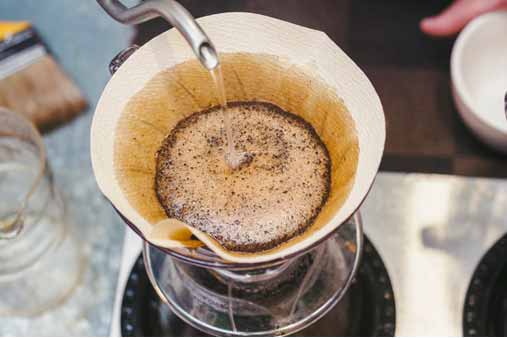To Roast or Not To Roast: Deciding for Your Cafe
Roasting your own coffee can make you a self-sustaining business owner with lower supply chain costs as you bypass the middleman for your key product. This approach also can help drive interest in your business before you even open your doors. Yet, running your own roasting facility also poses several challenges. This guide, written by coffee professionals, will help you decide whether or not roasting is right for your business.
Recommended: Read our full, in-depth How to Start a Coffee Shop Business guides, inspired by coffee professionals, they will help make your coffee dreams real, from sourcing beans to hiring baristas, choosing the best POS system, forming an actual company, and everything in between.

Pros & Cons of Operating a Roastery
Pros:
- Establishing your own roastery (or using a communal roasting space) gives you an opportunity to promote your brand more broadly before opening your cafe. Handing out free samples in the community — specifically in target areas for your shop — is one easy way to build interest. Potential recipients include local offices, retail businesses, churches, and community centers.
- Supplying wholesale accounts that want to serve or carry your coffee can boost your income alongside your cafe.
Cons:
- Securing a location for a roastery is more difficult than finding space for a coffee shop due to concerns about the sound, smoke, and other emissions commonly associated with such a facility.
- Roasting coffee well requires a certain degree of skill. If you don’t already have this expertise, it can take several years — as well as several thousand dollars — to achieve the necessary education. For example, a master roasting beginner course at Atlas Coffee can cost $1,000 for one day of training.
If you Choose to Roast
Roasting Processes
If roasting your own coffee sounds like the right path for your business, you’ll need to source beans from either a farm or, more commonly, a coffee importer. But, before you choose one of these options, you must understand the three common processes for harvesting and drying coffee beans. Why? Because each process affects the flavor profile of the beans differently, which will inform what you buy and how you roast them.
Here’s a quick overview of the three processes:
- Natural/Unwashed: Once the coffee cherries reach ideal ripeness, farmers pick them from the trees, place them on drying racks, and sun-dry them to fully remove the pulp and mucilage (the fruit surrounding the bean). This typically takes three to six weeks, and has been known to produce a brighter flavor profile and fuller body. This process is most commonly used in dry, warm climates with low humidity such as Ethiopia, Brazil, or Yemen.
- Pulped Natural/Honey: Farmers remove the skin of ripe coffee cherries, but leave the sticky mucilage and fleshy inside intact, before sun-drying them as in the natural/unwashed process above. This process, which usually takes about two weeks with nearly constant attention to the beans, produces an overall sweetness and balanced flavor. It’s most commonly used in Costa Rica.
- Fully Washed: After picking ripe coffee cherries, farmers place them in a vat of water and skim off any that float to the top. Farmers then use large amounts of water to remove the pulp and mucilage from the remaining cherries, ferment the cleaned beans or use a machine to wash, and, finally, dry them. This process typically takes about four weeks and allows the coffee to retain the flavor profile inherent to the bean itself vs. adopting a flavor from the processing method. It’s most commonly used in countries with wetter climates, like Kenya, that lack proper weather for sun-drying. However, it’s now increasingly common to see washed coffees in any origin that produces high-quality Arabica beans.
Importer vs. Farm-direct Buying
Now that you understand the common ways to process coffee cherries and how each impacts the flavor profile of the dried beans, you’re ready to choose a sourcing partner. Whether you prefer to work with an importer or directly with a farm in a specific region, here are some key factors to consider:
Importers
- Coffee importers are a common tool in the coffee industry. They are middlemen who source and distribute green (unroasted) coffee beans to roasters.
- The benefit of this approach is greater control and continuity over your product because importers are responsible for designating a profile for each coffee and guaranteeing quality. This is especially helpful because coffee beans vary drastically by lot and season.
- For an importer to transport beans to their facility and then to a buyer, they most likely need to charge at least $4.50 per pound to make a profit.
- Some challenges, however, include lack of a relationship with your farmer as well as higher prices than buying farm direct.
Farms:
- Coffee plants differ not only between country, but also between region. Different regions also will produce different flavor profiles in coffee due to climate, soil, altitude, and the coffee process common to that area.
- The necessary price a specialty coffee farmer should charge (just in green bean form) to pay employees a livable wage is around $3.75 per pound.
- Certain countries also have a reputation for specific flavor profiles, such as Ethiopia’s bright and fruit-forward coffees.
- The main benefits of this approach include transparency, relationship-building opportunities with your farmer, and lower prices.
- A key challenge, however, involves the actual exporting process. It’s much more difficult than simply shipping beans to your roastery. You’ll need to find an exporter/importer to transport the beans from the producer as well as navigate the taxes and regulations associated with moving coffee across borders. Some producers work with a specific exporter to make this process easier for their buyers.
Pro-Tip: Do your homework about exporter storage practices as proper green bean storage is vital to the quality of this product.
Additional Costs
Beyond flavor and desired region, there are many factors that go into choosing a farmer or importer, including company ethics, availability, cost, and the political climate in countries where the coffee is grown.
Coffee buyers are responsible for the costs of the coffee itself as well as additional fees for labor (e.g., for roasting, preparation, and anything else required to sell the end product), packaging, energy, and equipment. You can, however, reduce your equipment costs by using a shared roasting space.
Therefore, potential business owners need a high level of roasting knowledge if they plan to roast their own coffee.
If You’d Rather Not Roast
If roasting beans is not part of your business plan, you can buy coffee fairly easily and cost-efficiently from a wholesale roaster. In fact, many business models in the specialty coffee world now focus on producing a quality beverage vs. roasting the beans in-house. One major benefit of this approach is that you can feature different roasters and offer customers more variety because you don’t have to worry about selling a large amount of one specific type of coffee.
Choosing a Wholesale Roaster
Selecting the right wholesale roaster for your business will depend largely on your desired taste and accessibility. For example, if you don’t have local access to the type of coffee you want to sell, you’ll need to factor in the added cost and time to ship coffee from a roaster in another city or state. You also may want to consider whether a wholesale account with a roaster includes any training and/or equipment, which can help offset the cost of buying vs. roasting your coffee.
Here are key questions to ask as you evaluate wholesale roasters:
- Roast Types: Do they specialize in light, medium, dark, or a mix of all three?
- Blends and Single Origins: What variety do they offer in terms of blends vs. single-origin coffees? What beans do each of their blends include?
- Origins: Which specific origins do they carry regularly? How frequently do they feature coffees from other origins, and are these available for wholesale?
- Terms of Wholesale: Do they require you to use one specific coffee for espresso? Are there any restrictions or different options for wholesale buyers?
- Additional Perks: What perks do they offer their wholesale account holders? Do they include any training and/or equipment?
- Pricing: What pricing or discounts do they offer wholesale customers?
Managing Your Order Timeline
Due to coffee’s short shelf life, your timeline for ordering wholesale coffee is crucial to ensuring a high-quality, flavorful product.
Most wholesale roasters provide descriptive guidelines for storing and ordering their coffee. In general, you should plan to use up whole bean coffees within a week of delivery. In addition, plan to order espresso in small amounts (depending on volume) and use it within 12 weeks of its roasting date.

